5 Key Benefits of Hairline Implant: The Ultimate Guide
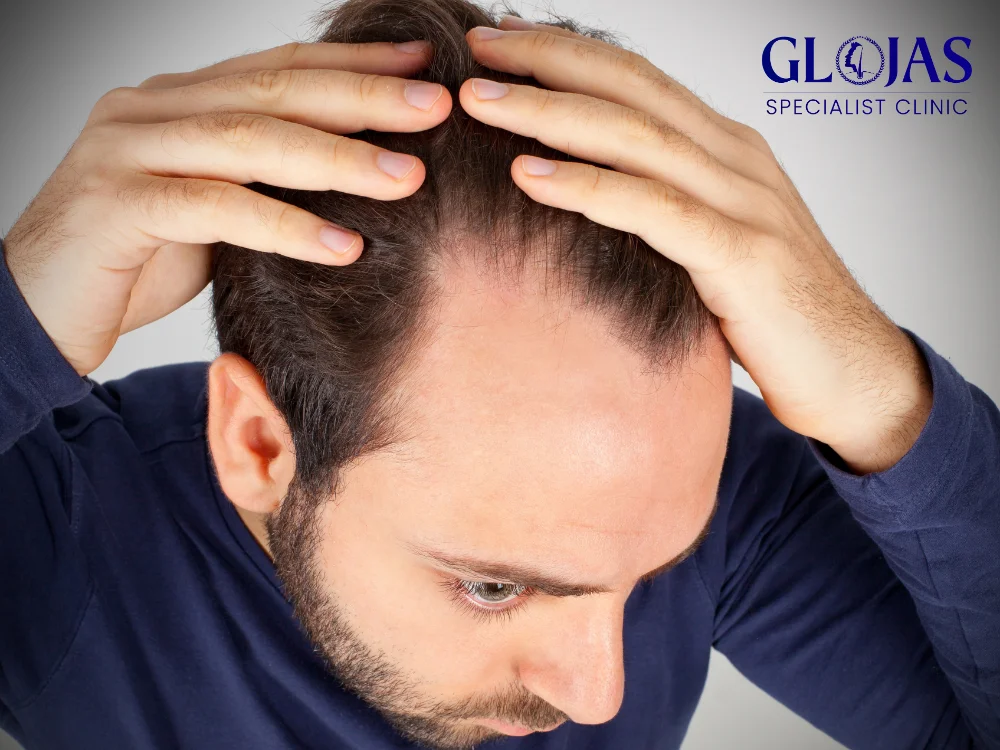
Hair loss, particularly along the hairline, can be distressing for both men and women. Thankfully, with advancements in medical technology, hairline transplant procedures have become a popular solution for restoring a natural-looking hairline. In this guide, we’ll explore everything you need to know about hairline transplants, from their benefits to what to expect during the process. What is a Hairline Implant? A hairline implant is a specialized hair restoration procedure that focuses on reconstructing or lowering the hairline. It typically involves harvesting hair follicles from areas where hair is dense (usually the back of the head) and implanting them along the hairline to create a fuller, more youthful appearance. This procedure can be an effective solution for those with receding hairlines, thin hair, or even those who simply want to lower their hairline for cosmetic reasons. Benefits of Hairline Implant 1. Natural-Looking Results One of the top reasons individuals opt for a hairline transplant is the ability to achieve natural-looking results. Skilled surgeons carefully place the transplanted follicles to mimic the natural direction and density of hair growth. The result is a seamless hairline that looks and feels entirely natural. With today’s advanced techniques, such as Follicular Unit Extraction (FUE), the precision and accuracy of follicle placement have drastically improved. Surgeons can tailor the hairline to suit the patient’s facial structure, enhancing both appearance and confidence. 2. Permanent Solution to Hair Loss Unlike other temporary hair restoration solutions, such as medications or wigs, a hairline transplant offers a permanent fix. Once the transplanted hair follicles have settled, they continue to grow just like natural hair. This permanence eliminates the need for ongoing treatments or frequent maintenance, making it a long-term investment in appearance and self-esteem. 3. Minimally Invasive Procedure A hairline transplant is a minimally invasive procedure, especially when using the FUE technique. This method involves extracting individual hair follicles rather than cutting out a strip of scalp, as is done in older techniques like Follicular Unit Transplantation (FUT). As a result, recovery time is shorter, and there is less visible scarring. Most patients are able to return to their normal activities within a few days, making it a convenient option for those with busy lifestyles. 4. Customizable Hairline Design Everyone’s hairline is unique, and with a hairline transplant, you have the opportunity to work closely with your surgeon to design a hairline that best suits your face. Surgeons take into consideration factors like facial symmetry, age, and the patient’s preferences to create a hairline that not only looks natural but also complements the individual’s appearance. For individuals seeking to restore their youthful look or those wanting a specific style, this level of customization is a major advantage. Whether you want a rounded, straight, or V-shaped hairline, the procedure can be tailored to meet your specific goals. 5. Boost in Confidence and Self-Esteem Hair loss can have a significant impact on self-esteem and confidence, particularly when it affects the hairline, which is highly visible. A hairline transplant can help restore confidence by providing a more youthful, vibrant appearance. Many patients report a significant improvement in their self-image after undergoing the procedure, feeling more comfortable in both personal and professional settings. The Hairline Implant Process Understanding the hairline transplant process can help alleviate any concerns or uncertainty about the procedure. Here’s a breakdown of what to expect: 1. Consultation and Planning The first step in the hairline transplant process is a consultation with your surgeon. During this meeting, your surgeon will assess your hair loss, discuss your desired results, and create a personalized plan for your transplant. The number of grafts required will be determined based on the extent of hair loss and the desired density of your new hairline. 2. Harvesting Donor Hair In an FUE procedure, hair follicles are individually harvested from the donor area, typically at the back or sides of the head. The follicles are carefully extracted using a tiny punch tool, which minimizes trauma to the surrounding tissue and reduces visible scarring. 3. Preparing the Hairline Once the donor follicles are harvested, the surgeon will make small incisions along the hairline where the new follicles will be implanted. This step is crucial for ensuring the transplanted hair grows in the natural direction and pattern, mimicking the existing hairline as closely as possible. 4. Implanting the Follicles The harvested follicles are then carefully implanted into the prepared sites along the hairline. Depending on the number of grafts needed, this part of the process can take several hours. However, patients are typically awake during the procedure and can watch TV, read, or listen to music. 5. Post-Procedure Care After the procedure, patients are given instructions for post-operative care. It’s common to experience some swelling or redness in the days following the surgery, but these symptoms usually subside quickly. The transplanted hair will shed within the first few weeks, but new growth will begin within a few months, with full results visible after about 9 to 12 months. How Much Does a Hairline Implant Cost? The cost of a hairline transplant can vary widely depending on several factors, including the number of grafts needed, the clinic’s location, and the surgeon’s expertise. On average, the cost ranges from $3,000 to $15,000. It’s important to remember that cheaper isn’t always better when it comes to surgical procedures—choosing an experienced, reputable surgeon is key to achieving the best results. FAQs on Hairline Implant 1. How long does a hairline implant take? A hairline transplant procedure typically takes between 4 to 8 hours, depending on the number of grafts being transplanted. 2. Is the procedure painful? Most patients experience minimal discomfort during the procedure. Local anesthesia is used to numb both the donor and recipient areas. 3. When will I see the results of my hairline implant? It can take 3 to 4 months for new hair growth to become noticeable, with full results appearing within 9 to 12 months. 4. Will the transplanted hair look
5 Proven Techniques for Effective Tattoo Removal: Why Pico Laser is a Game-Changer
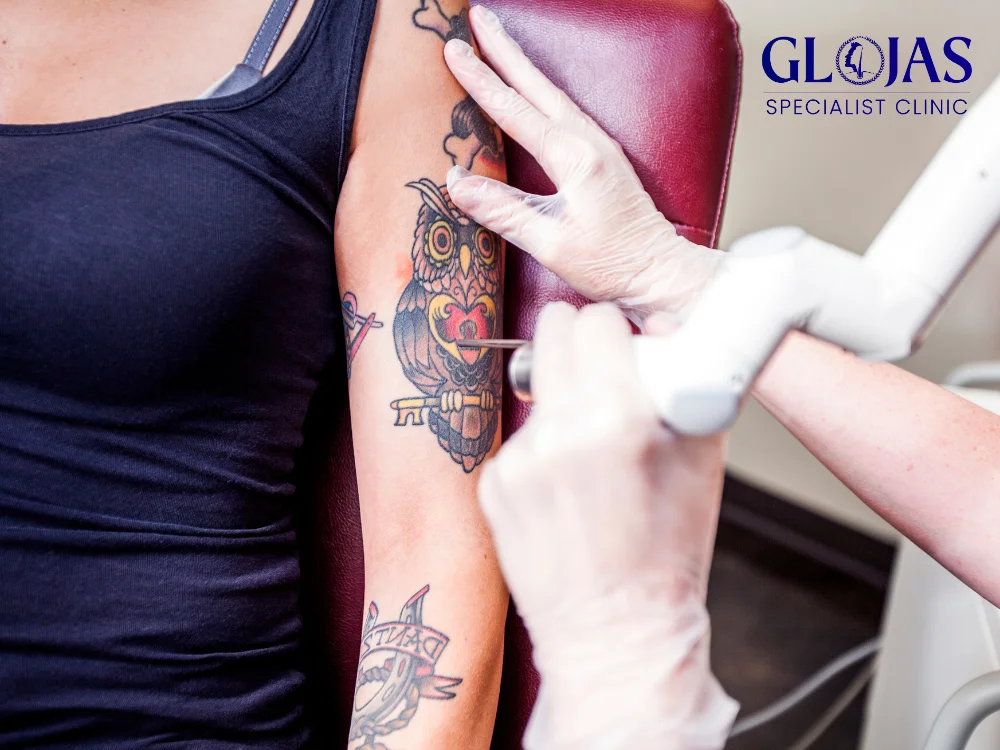
Tattoos are a popular form of self-expression, but what happens when the design no longer aligns with your personality or life choices? Fortunately, tattoo removal has advanced significantly, making it possible to erase or lighten unwanted ink. In this article, we’ll explore the top methods for effective tattoo removal, focusing on the revolutionary Pico Laser technique, which is changing the game in the world of dermatology. The Science Behind Tattoo Removal Tattoo removal involves breaking down the ink particles embedded in the skin so the body’s immune system can naturally clear them away. The process is far more complex than it sounds, and various factors—including tattoo color, ink depth, and skin type—affect the success rate. Several tattoo removal methods exist, but not all are created equal. It’s essential to understand which techniques are most effective and what you can expect during the process. Common Tattoo Removal Methods 1. Laser Tattoo Removal (Traditional) The most widely used tattoo removal method is traditional laser removal, which uses Q-switched lasers to break up ink particles. While effective for many people, this technique can sometimes be painful, and it often requires multiple sessions to achieve satisfactory results. The effectiveness of traditional laser tattoo removal depends on several factors: Ink color: Darker inks, such as black and dark blue, respond best to traditional lasers. Lighter colors like yellow and green are more difficult to treat. Tattoo size: Larger tattoos take more time and effort to remove completely. Skin tone: Certain lasers work better on lighter skin tones due to the reduced risk of skin pigmentation changes. 2. Dermabrasion Dermabrasion involves scraping away the layers of the skin where tattoo ink is embedded. This technique is less common due to its invasiveness and lengthy recovery time. It may also result in scarring, making it less desirable compared to laser treatments. 3. Chemical Peels Some clinics offer chemical peels for tattoo removal, where the skin is exfoliated using acids. The goal is to remove the outer layers of skin and allow the tattoo to fade over time. However, this method is often less effective than laser treatments and carries the risk of scarring and skin discoloration. Why Pico Laser is a Superior Tattoo Removal Option Among the many tattoo removal techniques, Pico Laser stands out as one of the most advanced and efficient options. Pico Laser technology uses ultra-short pulses of laser energy—measured in picoseconds (trillionths of a second)—to break up tattoo ink into tiny particles. This method offers several significant advantages over traditional laser removal. 1. Faster Results One of the key benefits of Pico Laser tattoo removal is its speed. Because the laser pulses are incredibly short, they can shatter the ink particles more effectively. This allows the body to clear away the ink faster, often resulting in fewer sessions compared to traditional laser treatments. 2. Reduced Risk of Skin Damage Traditional lasers can sometimes cause skin damage, leading to scarring or hyperpigmentation. Pico Lasers, however, use gentler pulses that target the ink more precisely without damaging the surrounding skin. This makes the procedure safer, especially for individuals with darker skin tones, who are more prone to pigmentation changes after laser treatments. 3. Better for Stubborn Ink Colors Pico Lasers are particularly effective for removing stubborn ink colors like red, green, and yellow—shades that traditional lasers often struggle to treat. The shorter pulses can break down these colors more efficiently, making Pico Laser the best choice for multicolored tattoos. 4. Minimal Discomfort Tattoo removal can be painful, but the Pico Laser’s ultra-short pulses make the treatment more tolerable than traditional laser methods. While some level of discomfort is inevitable, many patients report that Pico Laser treatments are less painful, with faster recovery times between sessions. Factors That Affect Pico Laser Tattoo Removal Success Although Pico Laser is a powerful tool for tattoo removal, several factors can influence the effectiveness of the treatment. Here are some of the most important variables: 1. Skin Type Pico Laser is effective on a wide range of skin types, but people with lighter skin tones generally experience faster results. Darker skin tones may require more cautious treatment to avoid pigmentation changes, but Pico Laser still offers a safer option compared to traditional methods. 2. Ink Depth and Density The deeper and denser the ink in your tattoo, the more sessions it may take to achieve full removal. However, the Pico Laser’s efficiency often reduces the total number of treatments required compared to older technologies. 3. Tattoo Age Older tattoos tend to fade naturally over time, making them easier to remove. Conversely, newer tattoos with fresh ink might require additional sessions as the ink has not yet begun to break down on its own. The Pico Laser Tattoo Removal Process: What to Expect Initial Consultation Before starting Pico Laser tattoo removal, you’ll need to have an initial consultation with a trained specialist. They will assess your tattoo and skin type to determine the best course of action. During this consultation, you’ll also learn how many sessions may be necessary based on the size, color, and location of your tattoo. During the Treatment During each session, the Pico Laser will be passed over the tattooed area, delivering high-energy pulses that break up the ink particles. Each session typically lasts between 10 and 30 minutes, depending on the size and complexity of the tattoo. You may feel some discomfort, similar to the sensation of snapping a rubber band against your skin. However, the Pico Laser’s fast pulses and precise targeting help minimize pain compared to traditional methods. Aftercare and Recovery After your Pico Laser session, it’s essential to follow proper aftercare instructions to promote healing and reduce the risk of complications. Most patients experience mild redness and swelling, which typically subsides within a few days. Avoid sun exposure, keep the area clean, and apply any recommended ointments to help your skin heal quickly. Multiple sessions will be necessary to achieve full tattoo removal. However, with Pico Laser’s faster
5 Amazing Benefits of Nose Shaping You Should Know
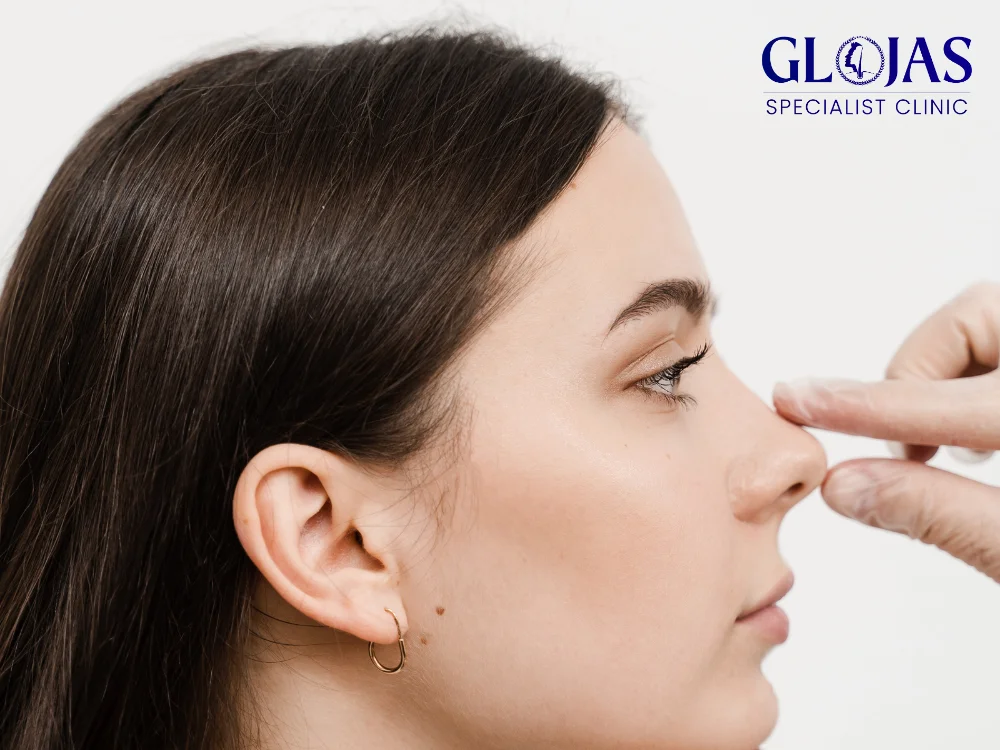
For many individuals, the appearance of their nose plays a significant role in how they perceive their overall facial balance. Whether it’s due to genetics, injury, or simply personal preference, nose shaping can provide a solution for those seeking to enhance the symmetry and aesthetic of their nose. In this guide, we’ll explore the benefits of nose shaping, the different methods available, and what to expect from the procedure. What is Nose Shaping? Nose shaping, also known as rhinoplasty, is a surgical or non-surgical procedure aimed at altering the shape, size, or structure of the nose to improve its appearance or function. Whether you’re looking to correct a deviated septum, smooth out a bump, or refine the nose tip, nose shaping can help achieve a more balanced and harmonious facial look. Both cosmetic and medical reasons can lead individuals to opt for nose shaping, and today’s advanced techniques ensure that the procedure is safer and more effective than ever before. 5 Key Benefits of Nose Shaping 1. Improves Facial Symmetry One of the primary reasons people seek out nose shaping is to achieve better facial symmetry. The nose is central to the face, and even minor alterations can have a dramatic effect on overall facial balance. For example, individuals with wide noses, bumps on the nasal bridge, or asymmetrical nostrils can benefit from procedures designed to create a more proportionate and aesthetically pleasing nose. Skilled surgeons tailor each procedure to the patient’s specific facial structure, ensuring a natural and harmonious result. 2. Boosts Confidence and Self-Esteem Feeling self-conscious about the appearance of your nose can affect your confidence and how you present yourself in both social and professional situations. Nose shaping can significantly improve a person’s self-esteem by creating a nose that aligns with their personal aesthetic goals. Patients often report feeling more comfortable in their own skin and experience a boost in self-confidence after the procedure. This psychological benefit often extends beyond appearance and enhances one’s overall well-being. 3. Corrects Breathing Issues For some individuals, nose shaping is not just about aesthetics—it’s about improving functionality. Structural issues like a deviated septum or nasal polyps can cause breathing difficulties, snoring, and sleep problems. Rhinoplasty can correct these issues, allowing for better airflow and an overall improvement in breathing. By addressing these medical concerns, nose shaping offers both cosmetic and functional benefits, improving quality of life for those affected by nasal obstructions. 4. Customizable and Tailored to Individual Needs One of the most appealing aspects of nose shaping is the ability to customize the procedure to fit each individual’s unique goals. No two noses are the same, and a one-size-fits-all approach doesn’t work when it comes to rhinoplasty. Whether you’re looking to refine the nose tip, narrow the bridge, or adjust the angle between the nose and upper lip, a skilled surgeon can create a personalized plan that addresses your specific concerns. This customization ensures that the final results are natural and tailored to your facial features. 5. Long-Lasting Results While non-surgical cosmetic procedures typically offer temporary results, surgical nose shaping (rhinoplasty) provides long-lasting outcomes. Once the nose has healed and the swelling has subsided, the results are permanent. This longevity makes nose shaping a worthwhile investment for individuals who want a permanent solution to their cosmetic or functional concerns. With proper care and attention, the benefits of rhinoplasty can last a lifetime, requiring no further touch-ups or adjustments. Surgical vs. Non-Surgical Nose Shaping: What’s the Difference? When it comes to nose shaping, there are both surgical and non-surgical options available. Each method has its own advantages, and the right choice depends on your goals and expectations. Surgical Nose Shaping (Rhinoplasty) Rhinoplasty is a surgical procedure that permanently reshapes the nose by altering the underlying bone and cartilage. It can address a wide range of issues, including size reduction, bump removal, or correcting structural deformities. Pros: Permanent results, highly customizable, can correct both cosmetic and medical issues. Cons: Longer recovery time (usually 1 to 2 weeks), risk of complications, higher cost. Non-Surgical Nose Shaping (Liquid Rhinoplasty) Non-surgical nose shaping, often referred to as a liquid rhinoplasty, uses injectable fillers like hyaluronic acid to reshape the nose temporarily. This option is ideal for individuals looking for minor adjustments, such as smoothing out bumps or refining the nose tip, without the need for surgery. Pros: Quick procedure, no downtime, reversible results. Cons: Temporary (results last 6 to 12 months), limited to minor adjustments, cannot address structural issues. The Nose Shaping Procedure: What to Expect Understanding the nose shaping process can help alleviate concerns and provide clarity about what to expect. Below is a general outline of both surgical and non-surgical procedures. Consultation The first step in any nose shaping procedure is a consultation with a qualified surgeon or cosmetic professional. During this meeting, you’ll discuss your goals, review your medical history, and undergo a thorough examination of your nose and facial features. Your surgeon will help determine whether you’re a good candidate for rhinoplasty or non-surgical treatments and provide recommendations for the best approach. Surgical Rhinoplasty Procedure For surgical rhinoplasty, the procedure is typically performed under general anesthesia. The surgeon makes small incisions, often inside the nostrils, to access the nasal bones and cartilage. They will then reshape the nose to achieve the desired results, whether that involves reducing its size, removing bumps, or correcting asymmetry. The surgery usually takes between 1 to 3 hours, depending on the complexity of the case. After surgery, the patient will wear a splint to protect the nose and help maintain its new shape during the healing process. Non-Surgical Liquid Rhinoplasty Procedure Non-surgical nose shaping is much quicker, usually lasting between 15 to 30 minutes. A cosmetic professional will inject fillers into specific areas of the nose to achieve the desired contour. There’s minimal discomfort, and the procedure doesn’t require anesthesia, although a numbing cream may be applied. Recovery from liquid rhinoplasty is almost immediate, and patients can typically return to their
7 Proven Strategies to Manage Alopecia Areata Effectively
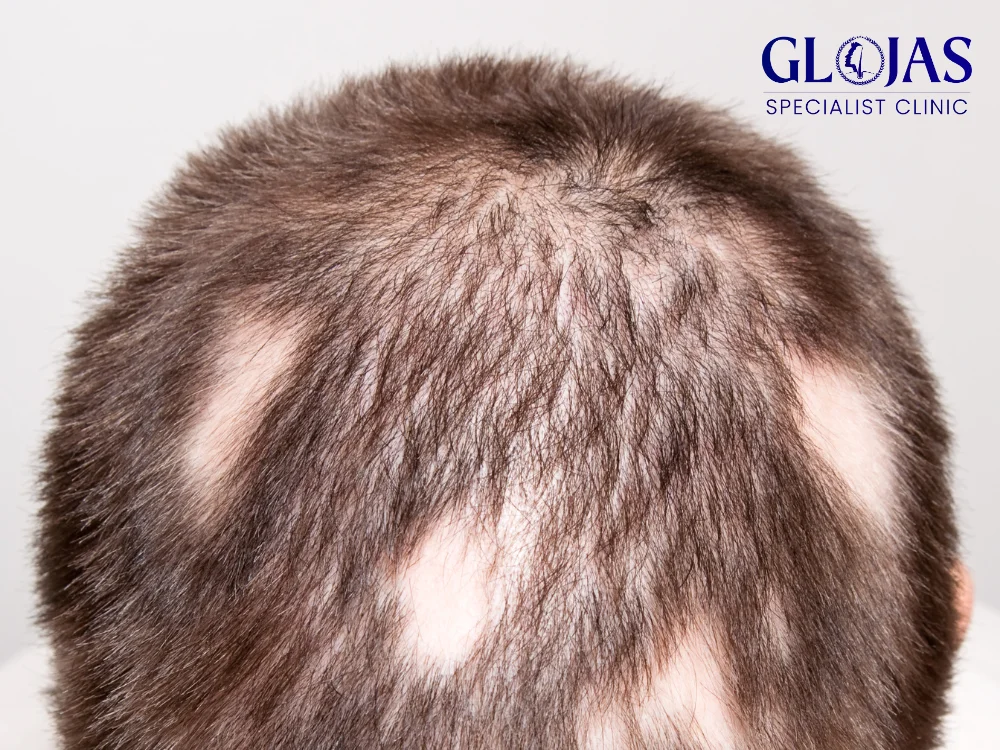
Alopecia areata is a common autoimmune condition that leads to hair loss in small, round patches on the scalp and other areas of the body. This unpredictable disorder affects millions worldwide, often leaving individuals seeking ways to manage and treat it effectively. Although alopecia areata can cause distress, several strategies and treatments have shown promise in controlling its progression and encouraging hair regrowth. In this article, we will explore everything you need to know about alopecia areata, including the causes, symptoms, and treatment options available. What is Alopecia Areata? Alopecia areata is an autoimmune disorder where the body’s immune system mistakenly attacks healthy hair follicles. This leads to the disruption of hair growth, resulting in patches of hair loss. The condition can affect anyone, regardless of age or gender, though it commonly develops in younger individuals. Alopecia areata is not contagious, nor is it life-threatening, but it can have significant emotional and psychological impacts due to visible hair loss. Types of Alopecia Areata There are different forms of alopecia areata that vary in severity: Alopecia areata (Patchy): Characterized by small, round patches of hair loss on the scalp or other parts of the body. Alopecia totalis: Complete hair loss across the entire scalp. Alopecia universalis: Hair loss occurs over the entire body, including the scalp, eyebrows, and eyelashes. Causes of Alopecia Areata The exact cause of alopecia areata is not fully understood, but it is believed to be a combination of genetic and environmental factors. Here are some potential causes: Genetics: Individuals with a family history of autoimmune disorders are more likely to develop alopecia areata. Autoimmune Response: The immune system mistakenly attacks the hair follicles, treating them as foreign invaders, leading to hair loss. Stress: Emotional or physical stress can trigger the onset or worsening of alopecia areata, although it is not a direct cause. Environmental Factors: Exposure to certain viruses or environmental toxins may contribute to the development of the condition. Symptoms of Alopecia Areata Alopecia areata typically manifests as sudden hair loss in small, round patches on the scalp, but the condition can affect any hair-bearing area of the body. Common symptoms include: Patchy Hair Loss: The most notable symptom is one or more round, smooth bald patches. Nail Changes: In some cases, individuals may experience changes in their fingernails or toenails, such as pitting or ridges. Regrowth and Relapse: Hair may grow back, but alopecia areata often has a cyclical nature, with periods of hair regrowth followed by further hair loss. Diagnosis of Alopecia Areata Alopecia areata is usually diagnosed through a clinical examination of the affected areas. In some cases, a biopsy or blood test may be required to rule out other conditions or determine if autoimmune factors are involved. Early diagnosis and intervention can be beneficial in managing the condition. Differentiating Alopecia Areata from Other Hair Loss Conditions Several conditions can mimic the symptoms of alopecia areata, such as: Androgenetic alopecia (male or female pattern baldness): Typically results in more diffuse hair thinning rather than patchy loss. Telogen effluvium: A temporary form of hair loss often triggered by stress or hormonal changes. Tinea capitis: A fungal infection that can cause bald patches with scaling and redness. 7 Proven Strategies to Manage Alopecia Areata Effectively While there is no cure for alopecia areata, many treatment options can help manage the condition and encourage hair regrowth. Here are seven proven strategies to consider: 1. Topical Corticosteroids One of the most common treatments for alopecia areata is topical corticosteroids. These medications help reduce inflammation around the hair follicles, allowing hair to regrow. Corticosteroid creams, ointments, or lotions are applied directly to the bald patches and are especially useful for small areas of hair loss. 2. Intralesional Corticosteroid Injections For individuals with more extensive hair loss, corticosteroid injections may be used. The injections are administered directly into the bald areas to promote hair regrowth. This treatment is often repeated every few weeks, depending on the severity of the hair loss. 3. Minoxidil (Rogaine) Minoxidil is a topical solution that can stimulate hair growth in individuals with alopecia areata. It is applied to the affected areas of the scalp and may promote regrowth in some cases. Minoxidil is generally more effective for smaller patches of hair loss. 4. Anthralin Anthralin is a topical medication commonly used to treat psoriasis but has also been effective in treating alopecia areata. It works by modifying the immune response in the skin, which can encourage hair regrowth in areas of baldness. 5. Immunotherapy Topical immunotherapy involves applying chemicals, such as diphencyprone (DPCP), to the scalp to trigger an allergic reaction. This reaction stimulates the immune system and can lead to hair regrowth over time. However, this treatment must be administered under medical supervision, as it can cause irritation and other side effects. 6. Platelet-Rich Plasma (PRP) Therapy PRP therapy is an emerging treatment for alopecia areata that involves drawing a small amount of the patient’s blood, processing it to concentrate the platelets, and then injecting the platelets into the scalp. This therapy is believed to promote hair regrowth by stimulating the hair follicles. 7. Lifestyle and Stress Management While stress is not a direct cause of alopecia areata, managing stress levels can help reduce the likelihood of flare-ups. Techniques such as meditation, yoga, and regular exercise can be beneficial for mental and emotional well-being, potentially improving the outcome of alopecia areata treatments. Living with Alopecia Areata Alopecia areata can be a challenging condition, both physically and emotionally. Individuals with alopecia areata often struggle with feelings of self-consciousness, especially if the hair loss is visible. Seeking support from friends, family, or support groups can help manage the emotional impact. Additionally, many people choose to wear wigs, scarves, or hats to cover bald patches and feel more confident in social situations. FAQs about Alopecia Areata 1. Can alopecia areata be cured? Currently, there is no cure for alopecia areata, but many treatments can help manage symptoms and promote
Ultimate Guide to Lip Filler: 5 Key Facts You Should Know Before Treatment
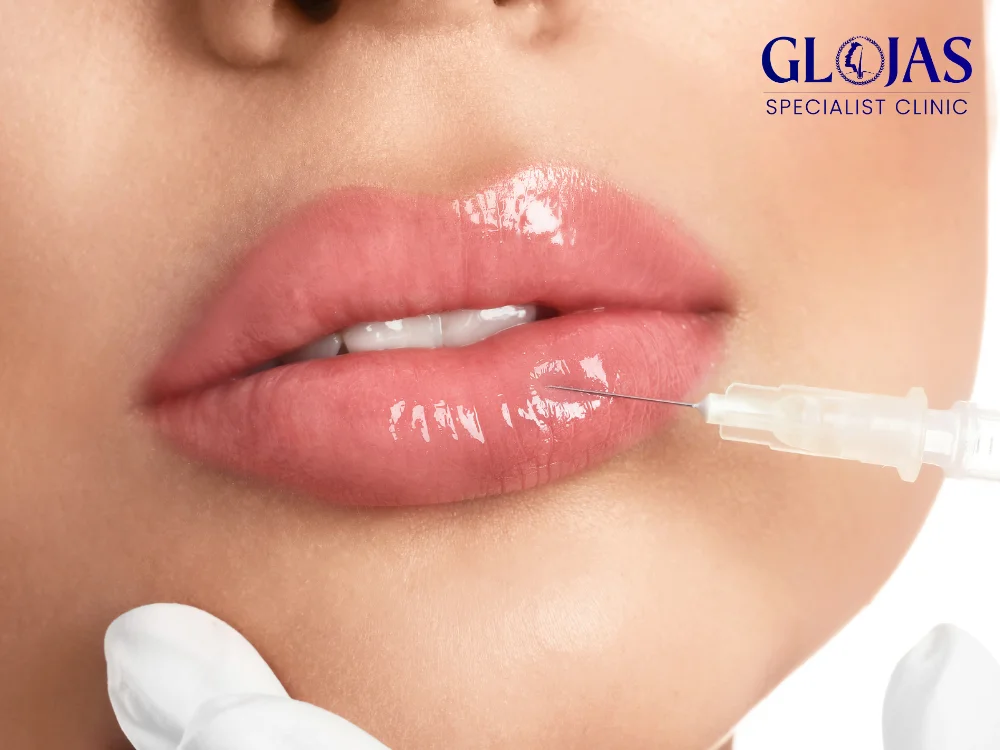
Lip filler treatments have surged in popularity over the past decade, thanks to celebrities and influencers showcasing fuller, plumper lips. Whether you’re seeking a subtle enhancement or more voluminous lips, lip filler procedures provide an effective, non-surgical option. If you’re considering getting lip fillers, it’s important to understand the process, the benefits, and the potential risks involved. In this guide, we will walk you through everything you need to know about lip filler treatments, how they work, what to expect, and some frequently asked questions. What is Lip Filler? Lip filler is a cosmetic treatment designed to enhance the volume and shape of the lips. The treatment involves injecting a gel-like substance, typically made from hyaluronic acid, into the lips. Hyaluronic acid is a naturally occurring substance in the body that retains moisture, making it an ideal choice for creating soft, natural-looking results. Common lip fillers on the market include products such as: Juvederm Restylane Belotero Each product varies slightly in composition, consistency, and longevity, giving you and your provider options based on your desired results. How Does Lip Filler Work? The process of getting lip filler is straightforward and typically takes about 30 minutes to an hour. Here’s a step-by-step breakdown of what happens during the procedure: Consultation: You’ll meet with a cosmetic professional to discuss your goals, desired lip shape, and volume. A qualified provider will assess your facial symmetry and advise on the best approach for natural-looking results. Numbing: To ensure a comfortable experience, a topical numbing cream or local anesthetic is applied to your lips. Most lip fillers also contain lidocaine to minimize discomfort during the injections. Injection: The provider uses a fine needle to inject the filler into specific areas of the lips, targeting the edges (for definition) or the body of the lips (for volume). Depending on your goals, the injections may be placed in various spots to achieve the perfect balance. Shaping and Smoothing: After the injections, the provider may gently massage the lips to ensure the filler is evenly distributed and that the shape looks natural. Post-Procedure Care: Once the procedure is complete, you’ll be given post-treatment care instructions to minimize swelling and bruising. Who is a Good Candidate for Lip Filler? The ideal candidate for lip filler is anyone looking to enhance the size, shape, or symmetry of their lips. Lip fillers can be customized to meet individual goals, whether you’re looking for a subtle enhancement or a more dramatic look. Candidates should be in good health and have realistic expectations. Other considerations that might make you a good candidate for lip fillers include: You have naturally thin lips and want more volume. You want to restore volume lost due to aging. You want to improve the symmetry between the upper and lower lips. You’re looking for temporary results that can be adjusted over time (as lip fillers are not permanent). If you have active oral infections (like cold sores), autoimmune conditions, or allergies to the filler ingredients, you may need to avoid this treatment or consult with your doctor first. Benefits of Lip Filler Treatment There are several reasons why people opt for lip filler treatments, and the benefits go beyond just aesthetics: Instant Results: Unlike some cosmetic treatments that require multiple sessions, lip fillers provide noticeable results immediately after the procedure. Minimal Downtime: You can usually return to your normal activities right after the treatment, with only mild swelling or bruising that subsides within a few days. Adjustable and Reversible: Since hyaluronic acid-based fillers are temporary, you have control over how much filler you want and can gradually build up to your desired look. If you’re unhappy with the results, the filler can be dissolved using an enzyme called hyaluronidase. Natural-Looking Results: Modern lip filler treatments are designed to look subtle and natural, especially when performed by an experienced injector. Improved Lip Shape and Structure: In addition to adding volume, lip fillers can help define the edges of the lips (the vermillion border), smooth out fine lines, and enhance the cupid’s bow. What to Expect During Recovery While the lip filler procedure itself is quick, the recovery process takes a few days. Here’s what you can expect after the treatment: Swelling and Bruising: Swelling is normal and typically lasts for 24 to 48 hours after the injections. Bruising may also occur but usually fades within a week. Applying ice and sleeping with your head elevated can help reduce swelling. Avoid Touching Your Lips: It’s essential to avoid touching, massaging, or pressing on your lips for the first 24 hours. This ensures the filler settles evenly and prevents shifting. Hydration: Drinking plenty of water helps maintain the results of your lip filler, as hyaluronic acid binds to moisture to keep your lips plump. Final Results: While you’ll see an immediate change, the final shape of your lips will settle within one to two weeks after the treatment. During this time, the swelling subsides, and the filler integrates with your tissue. How Long Do Lip Fillers Last? The longevity of lip filler results varies based on the type of filler used, the amount injected, and your body’s metabolism. On average, most lip fillers last between 6 to 12 months. However, some individuals may need touch-ups as early as 4 to 6 months, while others enjoy the results for over a year. Factors that influence the duration include: Metabolism: People with faster metabolisms may break down the filler more quickly. Type of Filler: Thicker fillers or those specifically designed for long-lasting effects may last longer. Lifestyle: Smoking or frequent sun exposure can accelerate the breakdown of fillers. Potential Risks and Side Effects While lip filler treatments are generally safe when performed by a qualified professional, there are some risks and side effects to be aware of. These include: Swelling and Bruising: Mild swelling and bruising are the most common side effects and typically resolve within a week. Lumps or Unevenness: In rare cases, lumps or
Otoplasti: Memahami Prosedur Pembedahan Telinga
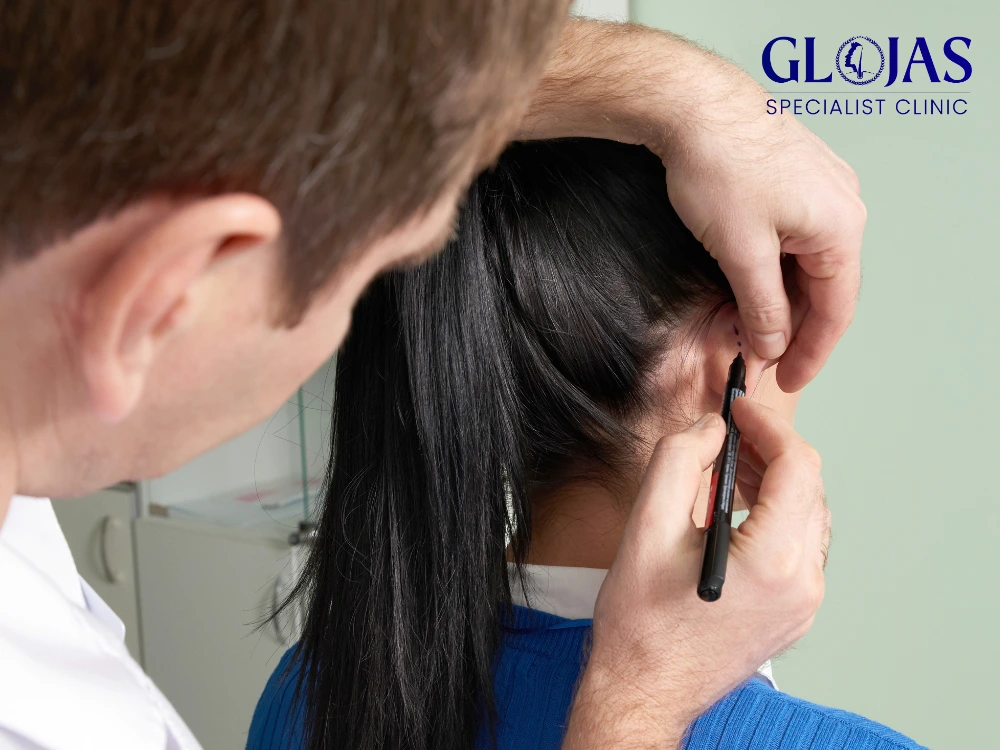
Otoplasti adalah prosedur pembedahan yang bertujuan untuk membetulkan atau mengubah bentuk telinga, terutama bagi mereka yang mengalami masalah telinga yang menonjol atau tidak simetri. Prosedur ini telah menjadi semakin popular, bukan sahaja untuk tujuan kosmetik tetapi juga untuk meningkatkan keyakinan diri pesakit. Dalam artikel ini, kita akan meneroka secara mendalam tentang otoplasti, termasuk sejarah, proses pembedahan, pemulihan, kesan psikologi kepada pesakit, serta risiko dan komplikasi yang mungkin timbul. Sejarah Otoplasti Sejarah otoplasti bermula sejak zaman purba. Pembedahan telinga telah dicatatkan dalam teks-teks perubatan kuno, tetapi ia menjadi lebih sistematik pada awal abad ke-20. Pada tahun 1881, seorang pakar bedah Jerman, Dr. Johann Friedrich Dieffenbach, memperkenalkan teknik pembedahan untuk membetulkan telinga yang menonjol. Sejak itu, teknik otoplasti telah berkembang dengan pesat, menggunakan teknologi moden dan prinsip pembedahan yang lebih baik. Pada awalnya, otoplasti hanya dilakukan untuk tujuan perubatan, tetapi seiring dengan perubahan dalam pandangan masyarakat terhadap kecantikan, semakin ramai orang yang memilih otoplasti untuk tujuan kosmetik. Jenis-jenis Otoplasti Terdapat beberapa jenis otoplasti, yang masing-masing mempunyai tujuan dan pendekatan yang berbeza. Antara jenis otoplasti yang paling umum adalah: Otoplasti untuk Telinga Menonjol: Ini adalah jenis otoplasti yang paling biasa. Ia melibatkan pengurangan atau penempatan semula tulang rawan telinga untuk mengurangkan penonjolan telinga. Pesakit yang mengalami telinga menonjol sering kali merasakan tekanan psikologi yang besar, terutama semasa kanak-kanak dan remaja. Otoplasti untuk Telinga Asimetrik: Dalam kes ini, otoplasti dilakukan untuk mengimbangkan dua telinga yang tidak simetri. Prosedur ini mungkin melibatkan pengubahsuaian pada salah satu atau kedua-dua telinga. Telinga yang tidak simetri boleh memberi kesan kepada penampilan keseluruhan wajah, dan otoplasti boleh membantu memperbaikinya. Otoplasti Rekonstruktif: Ini adalah prosedur yang lebih kompleks, biasanya dilakukan pada individu yang telah mengalami kecederaan atau keadaan kongenital yang mengakibatkan telinga yang tidak normal. Otoplasti rekonstruktif memerlukan kemahiran tinggi dan pemahaman mendalam tentang anatomi telinga. Otoplasti untuk Kecacatan Congenital: Dalam beberapa kes, otoplasti diperlukan untuk membetulkan kecacatan yang wujud sejak lahir, seperti anotia (ketiadaan telinga) atau mikrotia (telinga yang terlalu kecil). Prosedur ini membantu meningkatkan fungsi pendengaran serta penampilan. Proses Pembedahan Otoplasti Prosedur otoplasti biasanya dilakukan oleh pakar bedah plastik dan boleh berlangsung antara satu hingga dua jam, bergantung kepada kompleksiti kes. Proses ini bermula dengan konsultasi di mana doktor pakar bedah akan menilai keadaan telinga pesakit dan berbincang tentang harapan dan hasil yang diinginkan. Langkah-langkah dalam Prosedur Otoplasti: Anestesia: Otoplasti biasanya dilakukan di bawah anestesia umum atau sedasi, bergantung kepada umur pesakit dan tahap kerumitan prosedur. Anestesia akan memastikan pesakit tidak merasakan sakit semasa pembedahan. Pembedahan: Doktor akan membuat sayatan di belakang telinga untuk mengakses tulang rawan. Setelah itu, tulang rawan akan diubah suai untuk mendapatkan bentuk yang diinginkan. Dalam kes telinga yang menonjol, doktor mungkin akan membuang sebahagian tulang rawan atau membentuk semula tulang rawan untuk memberikan penampilan yang lebih natural. Teknik jahitan moden digunakan untuk meminimumkan parut. Penutupan Sayatan: Selepas pengubahsuaian selesai, sayatan akan ditutup dengan jahitan. Dalam kebanyakan kes, jahitan ini tidak akan meninggalkan parut yang ketara. Penggunaan teknik jahitan yang baik dan penempatan sayatan di kawasan yang tersembunyi membantu dalam pemulihan yang lebih estetik. Pemulihan: Pesakit akan dipindahkan ke bilik pemulihan untuk pemantauan sebelum dibenarkan pulang. Ini adalah langkah penting untuk memastikan tiada komplikasi selepas pembedahan. Pemulihan Selepas Otoplasti Pemulihan selepas otoplasti biasanya mengambil masa beberapa minggu. Pesakit akan disarankan untuk memakai pembalut atau penutup telinga khas untuk melindungi telinga yang baru dibedah. Ini juga membantu dalam mengurangkan bengkak dan mempromosikan penyembuhan yang baik. Tempoh Pemulihan Hari Pertama: Pesakit mungkin mengalami ketidakselesaan ringan dan bengkak. Ubat tahan sakit akan diberikan untuk mengurangkan rasa sakit. Dalam beberapa kes, pesakit juga mungkin mengalami sedikit pendarahan, tetapi ini biasanya akan berhenti dengan cepat. Minggu Pertama: Pembalut akan ditanggalkan dan pesakit akan diminta untuk menghadiri pemeriksaan susulan. Pada tahap ini, bengkak dan lebam mungkin masih ketara. Pesakit akan dinasihatkan untuk menghindari aktiviti fizikal yang berat. Minggu Kedua hingga Keempat: Kebanyakan pesakit dapat kembali ke aktiviti harian mereka dalam tempoh ini, tetapi aktiviti berat masih perlu dielakkan. Penggunaan topi atau penutup telinga untuk melindungi telinga yang baru dibedah adalah disarankan. Enam Bulan ke Satu Tahun: Hasil akhir otoplasti biasanya akan dapat dilihat selepas enam bulan. Pada masa ini, semua bengkak dan ketidakselesaan seharusnya telah hilang. Pesakit disarankan untuk mengikuti janji temu susulan bagi memastikan hasil yang diinginkan dicapai. Kesan Psikologi Otoplasti Salah satu aspek yang paling penting mengenai otoplasti adalah kesan psikologi yang positif ke atas pesakit. Telinga yang menonjol atau tidak simetri boleh menyebabkan ketidakselesaan dan rendah diri, terutamanya di kalangan kanak-kanak dan remaja. Dengan menjalani otoplasti, banyak pesakit melaporkan peningkatan keyakinan diri dan penerimaan diri yang lebih baik. Kajian Kes Beberapa kajian menunjukkan bahawa kanak-kanak yang menjalani otoplasti sering mengalami peningkatan dalam prestasi sosial dan akademik. Mereka lebih cenderung untuk bergaul dengan rakan-rakan sebaya dan menghindari masalah bullying yang sering berlaku akibat penampilan fizikal. Peningkatan keyakinan diri ini juga dapat mempengaruhi hubungan interpersonal, menjadikan pesakit lebih terbuka dan bersosial. Risiko dan Komplikasi Otoplasti Seperti semua prosedur pembedahan, otoplasti juga mempunyai risiko dan komplikasi. Beberapa risiko yang mungkin termasuk: Jangkitan: Jangkitan adalah risiko yang biasa dalam mana-mana pembedahan. Pesakit perlu mematuhi arahan selepas pembedahan untuk mengurangkan risiko ini. Jika pesakit mengalami tanda-tanda jangkitan, seperti kemerahan, bengkak yang meningkat, atau suhu badan yang tinggi, mereka harus segera mendapatkan rawatan. Pendarahan: Pendarahan berlebihan mungkin berlaku selepas pembedahan. Ini mungkin memerlukan rawatan lanjut. Sekiranya pendarahan tidak berhenti atau menjadi lebih teruk, pesakit perlu berjumpa dengan doktor. Parut: Walaupun sayatan dibuat di belakang telinga untuk mengurangkan parut, ada kemungkinan parut yang ketara boleh muncul. Namun, dengan teknik moden, kebanyakan parut biasanya tidak terlalu jelas. Keputusan Tidak Memuaskan: Kadang-kadang, hasil otoplasti mungkin tidak memenuhi jangkaan pesakit, dan pembedahan tambahan mungkin diperlukan. Oleh itu, penting untuk berkomunikasi dengan jelas mengenai harapan dan hasil yang diinginkan sebelum pembedahan. Masalah dengan Bentuk Telinga: Dalam beberapa kes, telinga mungkin tidak mencapai bentuk yang diinginkan selepas pembedahan. Ini mungkin memerlukan pembedahan semula atau prosedur tambahan. Memilih Pakar Bedah Otoplasti Memilih pakar bedah untuk menjalani otoplasti adalah langkah penting yang memerlukan penelitian yang teliti. Pesakit disarankan untuk mencari pakar bedah yang berpengalaman dalam melakukan otoplasti dan mempunyai rekod
Is Dimple Creation Surgery Permanent?

Dimple Creation Malaysia Dimples Creation have long been considered a sign of beauty, charm, and youthful appeal. While some people are naturally born with them, others may desire to enhance their facial aesthetics with dimple creation surgery. This minimally invasive cosmetic procedure is gaining popularity as it offers a quick and effective way to achieve natural-looking dimples. But one of the most common questions patients ask is: Is dimple creation surgery permanent? In this guide, we’ll explore everything about dimpleplasty, including its procedure, benefits, risks, recovery time, and whether the results last a lifetime. What is Dimple Creation Surgery? Dimple creation surgery, also known as dimpleplasty, is a cosmetic procedure that creates dimples on the cheeks or chin. It involves making a small incision inside the mouth and creating a small scar between the cheek muscles, which results in a natural-looking dimple. The procedure is popular among individuals who want to enhance their facial aesthetics, as dimples are often associated with a more attractive and youthful appearance. How is Dimpleplasty Performed? Dimple creation surgery is a quick and minimally invasive procedure that typically takes 30 to 45 minutes. Here’s a step-by-step breakdown of how it is performed: Consultation – The surgeon assesses your facial anatomy and discusses the placement of the dimples. Local Anesthesia – A numbing agent is applied to ensure a pain-free experience. Incision Inside the Cheek – A small incision is made inside the mouth, leaving no visible external scars. Suturing the Tissue – The surgeon creates an artificial adhesion between the cheek muscle and skin using dissolvable stitches, forming a dimple. Recovery – The patient can return home immediately after the procedure with minimal downtime. Since the surgery is done through the inside of the mouth, there are no visible scars or stitches on the face. Is Dimple Creation Surgery Permanent? Yes, dimple creation surgery is generally considered permanent. The artificial adhesion formed during the surgery mimics a natural dimple, and over time, the scar tissue secures the dimple permanently in place. However, it’s important to note that the depth and visibility of the dimple may change over time. Initially, the dimple is present even when the face is relaxed, but as healing progresses, it typically appears only when you smile or move your facial muscles. Factors Affecting Permanency Healing Process – Proper healing ensures the dimple lasts a lifetime. Surgical Technique – An experienced surgeon will create a more natural and long-lasting result. Facial Structure – Some people may have naturally looser or firmer skin, affecting the final appearance. Weight Fluctuations – Significant weight gain or loss can alter facial contours, potentially affecting dimple visibility. In rare cases, some patients may find that the dimple fades over time due to muscle relaxation or changes in facial fat. Benefits of Dimple Creation Surgery ✔️ Permanent & Natural-Looking Results – Once healed, the dimple blends seamlessly with natural facial expressions.✔️ Minimally Invasive Procedure – No external incisions or scars.✔️ Quick Recovery – Most patients resume daily activities within a few days.✔️ Boosts Facial Aesthetics – Enhances smile and adds youthful charm.✔️ Customizable – You can choose the size, depth, and location of the dimples. Risks & Side Effects of Dimple Surgery While dimpleplasty is generally safe, it’s important to be aware of potential risks, including: 🔹 Swelling & Bruising – Temporary and subsides within a few days.🔹 Infection – Rare, but can occur if post-surgery care is not followed.🔹 Asymmetry – In rare cases, dimples may be uneven if not performed by an expert surgeon.🔹 Dimple Reduction – Some dimples may fade over time.🔹 Temporary Facial Stiffness – Due to healing of the cheek muscles. Choosing an experienced and qualified cosmetic surgeon significantly reduces the risk of complications. Dimple Creation Surgery Recovery & Aftercare 🔹 Mild swelling & soreness for the first few days.🔹 Soft diet for a few days to prevent irritation.🔹 Avoid smoking & alcohol as they can slow healing.🔹 Rinse mouth with antiseptic solution to prevent infections.🔹 Follow up with the surgeon to ensure proper healing. Most patients can return to normal activities within 2-3 days, with full healing taking around 2-4 weeks. Is Dimple Surgery Right for You? Dimple creation surgery is ideal for individuals who:✅ Desire a permanent dimple to enhance facial aesthetics.✅ Want a minimally invasive and quick cosmetic procedure.✅ Are in good health with no major oral or skin infections.✅ Have realistic expectations about the results and healing process. If you’re considering dimple surgery, consult an experienced surgeon to determine if it’s the right option for you. 5 FAQs About Dimple Creation Surgery 1. How long does it take to see the final results? Initially, the dimple will appear even when the face is relaxed. Over the next 2-3 months, it settles into a more natural look, appearing only when you smile. 2. Can dimple surgery be reversed? In rare cases, a dimple can fade over time, but completely reversing it may require additional surgery. 3. Is dimple surgery painful? No, the procedure is performed under local anesthesia, ensuring minimal discomfort. Some mild soreness may be experienced during recovery. 4. Can I choose where my dimples are placed? Yes! Your surgeon will work with you to customize the size, shape, and placement of the dimples based on your facial structure. 5. How much does dimple creation surgery cost? The cost varies depending on the clinic, surgeon’s expertise, and location, typically ranging from $500 to $2,500 per dimple. Conclusion: Is Dimple Creation Surgery Permanent? Dimple creation surgery is a safe, effective, and long-lasting way to enhance facial aesthetics. In most cases, the results are permanent, though slight changes may occur over time due to aging or weight fluctuations. With minimal downtime and no visible scars, dimpleplasty is a popular choice for those seeking a charming, natural-looking dimple. If you’re interested in dimple surgery, consult a certified cosmetic surgeon to discuss your options and ensure the best possible results.
Kos Tanam Jambang: Panduan Lengkap dan Terperinci
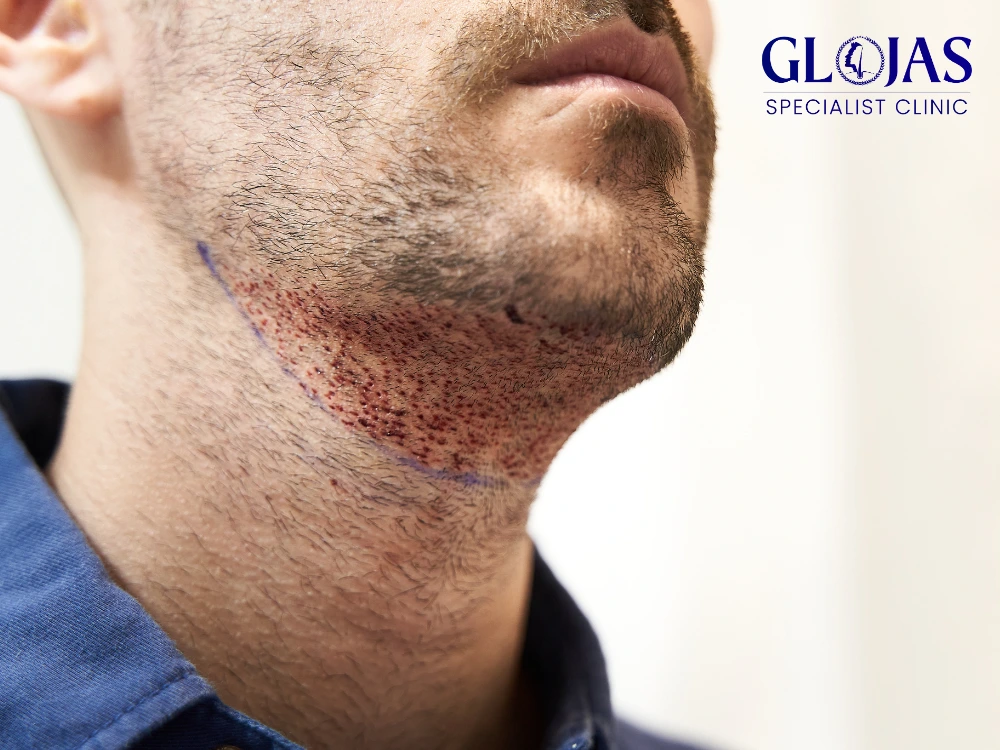
Tanam jambang adalah prosedur kosmetik yang semakin mendapat perhatian di kalangan lelaki di Malaysia. Banyak individu ingin memiliki jambang yang lebat dan kemas untuk meningkatkan penampilan mereka dan meningkatkan keyakinan diri. Namun, sebelum memutuskan untuk menjalani prosedur ini, adalah penting untuk memahami kos tanam jambang serta faktor-faktor yang mempengaruhi harga dan keputusan tersebut. Artikel ini akan mengupas secara terperinci mengenai kos tanam jambang, prosesnya, manfaat, dan aspek lain yang perlu dipertimbangkan. Apa Itu Tanam Jambang? Tanam jambang adalah prosedur pembedahan kosmetik yang melibatkan pemindahan folikel rambut dari kawasan donor ke kawasan wajah yang memerlukan jambang. Tujuan utama prosedur ini adalah untuk memberikan penampilan jambang yang lebih penuh dan semula jadi. Proses tanam jambang biasanya dilakukan menggunakan teknik seperti FUE (Follicular Unit Extraction) dan FUT (Follicular Unit Transplantation). Kedua-dua teknik ini mempunyai kelebihan dan kekurangan masing-masing. Faktor yang Mempengaruhi Kos Tanam Jambang Kos tanam jambang tidak tetap dan boleh berbeza-beza bergantung kepada beberapa faktor. Berikut adalah faktor-faktor utama yang mempengaruhi kos tanam jambang: Klinik dan Lokasi: Klinik di bandar-bandar besar seperti Kuala Lumpur atau Johor Bahru cenderung mengenakan kos yang lebih tinggi berbanding dengan klinik di kawasan luar bandar. Ini disebabkan oleh kos penyewaan, gaji kakitangan, dan perkhidmatan yang lebih premium di kawasan bandar. Pengalaman Pakar Bedah: Kos tanam jambang juga dipengaruhi oleh pengalaman dan reputasi pakar bedah. Pakar yang lebih berpengalaman dan terkenal biasanya mengenakan bayaran yang lebih tinggi kerana mereka memiliki kemahiran dan pengetahuan yang lebih baik dalam menjalankan prosedur ini. Teknik yang Digunakan: Kos tanam jambang berbeza mengikut teknik yang dipilih. Sebagai contoh, teknik FUE mungkin lebih mahal berbanding dengan teknik FUT kerana ia memerlukan proses yang lebih rumit dan memakan masa. Kualiti Bahan dan Alat: Klinik yang menggunakan teknologi dan alat terkini mungkin mengenakan kos yang lebih tinggi. Penggunaan bahan berkualiti tinggi juga akan mempengaruhi harga, tetapi ia juga menjamin hasil yang lebih baik. Jumlah Rambut yang Ditanam: Kos tanam jambang akan meningkat jika bilangan folikel rambut yang diperlukan adalah lebih banyak. Oleh itu, pesakit perlu berbincang dengan pakar tentang jumlah folikel yang diperlukan untuk mencapai hasil yang dikehendaki. Perkhidmatan Tambahan: Beberapa klinik menawarkan perkhidmatan tambahan seperti pemantauan pasca pembedahan dan rawatan susulan. Kos untuk perkhidmatan ini juga perlu dipertimbangkan. Kos Tanam Jambang di Malaysia Secara purata, kos tanam jambang di Malaysia boleh berkisar antara RM3,000 hingga RM10,000. Namun, angka ini hanyalah anggaran dan kos sebenar mungkin berbeza bergantung kepada faktor-faktor yang telah disebutkan. Mari kita lihat lebih dekat anggaran kos berdasarkan teknik dan keadaan. 1. Teknik FUE Teknik FUE adalah salah satu pilihan paling popular bagi mereka yang ingin melakukan tanam jambang. Dalam teknik ini, folikel rambut diambil satu persatu dari kawasan donor, biasanya di belakang kepala, dan ditanam di kawasan jambang yang dikehendaki. Kos tanam jambang menggunakan teknik FUE biasanya berkisar antara RM5,000 hingga RM10,000. Kelebihan teknik ini adalah ia tidak meninggalkan parut yang ketara dan hasilnya sering kelihatan lebih semula jadi. 2. Teknik FUT Teknik FUT, di mana jalur kulit yang mengandungi folikel rambut diambil dari kawasan donor, juga merupakan pilihan yang baik. Kos tanam jambang menggunakan teknik FUT biasanya lebih rendah, antara RM3,000 hingga RM7,000. Walau bagaimanapun, teknik ini mungkin meninggalkan parut yang lebih ketara berbanding teknik FUE. Ini adalah pertimbangan penting bagi mereka yang lebih mementingkan penampilan pasca pembedahan. 3. Klinik Terkenal vs. Klinik Tempatan Klinik yang terkenal dengan reputasi yang baik sering mengenakan kos tanam jambang yang lebih tinggi. Namun, mereka biasanya menawarkan perkhidmatan yang lebih baik dan hasil yang lebih memuaskan. Klinik tempatan atau baru mungkin menawarkan harga yang lebih rendah, tetapi penting untuk melakukan penyelidikan dan memastikan mereka mempunyai kelayakan dan pengalaman yang mencukupi. Pastikan anda membaca ulasan dan testimoni daripada pesakit terdahulu untuk menilai kualiti perkhidmatan yang ditawarkan. Proses Tanam Jambang Proses tanam jambang melibatkan beberapa langkah yang penting untuk mendapatkan hasil yang diinginkan. Berikut adalah langkah-langkah dalam prosedur ini: Konsultasi Awal: Pada sesi ini, pesakit akan menjalani perbincangan dengan pakar bedah mengenai harapan, keperluan, dan pilihan prosedur. Pakar akan menilai keadaan kulit dan rambut pesakit serta memberikan nasihat tentang teknik yang paling sesuai. Persiapan: Sebelum prosedur dimulakan, pesakit mungkin diminta untuk menjalani ujian darah dan mendapatkan arahan tertentu tentang penjagaan sebelum pembedahan. Ini termasuk pengelakan ubat-ubatan tertentu dan memastikan kawasan donor dalam keadaan baik. Prosedur Pembedahan: Prosedur pembedahan akan dilakukan di bawah anestesia tempatan atau sedasi. Pakar akan mengambil folikel rambut dari kawasan donor dan menanamnya ke kawasan jambang yang dikehendaki. Proses ini biasanya mengambil masa antara 4 hingga 8 jam, bergantung kepada jumlah folikel yang ditanam. Pemulihan: Selepas prosedur, pesakit akan diberikan arahan mengenai penjagaan pasca pembedahan. Ini termasuk cara membersihkan kawasan jambang dan ubat-ubatan yang perlu diambil untuk mengurangkan ketidakselesaan. Pemulihan biasanya mengambil masa antara beberapa hari hingga beberapa minggu. Manfaat Tanam Jambang Tanam jambang menawarkan pelbagai manfaat kepada pesakit yang memutuskan untuk menjalani prosedur ini. Antara manfaat tersebut adalah: Penampilan yang Lebih Menarik: Jambang yang lebat dan kemas dapat meningkatkan penampilan wajah lelaki, memberikan mereka keyakinan diri yang lebih tinggi. Dalam dunia yang semakin mementingkan penampilan, jambang yang baik boleh menjadi satu aset yang bernilai. Hasil yang Semula Jadi: Dengan teknik yang betul, hasil tanam jambang boleh kelihatan sangat semula jadi, sehingga sukar untuk membezakan antara rambut asli dan rambut yang ditanam. Ini membolehkan pesakit tampil yakin tanpa rasa malu. Jangka Hayat yang Panjang: Folikel rambut yang ditanam akan terus tumbuh seperti rambut biasa dan tidak memerlukan penjagaan yang tinggi. Dengan penjagaan yang betul, jambang yang ditanam dapat bertahan selama bertahun-tahun. Meningkatkan Keyakinan Diri: Banyak lelaki melaporkan peningkatan dalam keyakinan diri mereka selepas menjalani prosedur tanam jambang, yang boleh memberi kesan positif kepada kehidupan sosial dan profesional mereka. Keyakinan ini boleh mengubah cara mereka berinteraksi dengan orang lain. Kebebasan untuk Menentukan Gaya: Dengan jambang yang lebat, lelaki mempunyai lebih banyak pilihan dalam menentukan gaya penampilan. Mereka boleh mencuba pelbagai gaya jambang dan menyesuaikannya dengan keperibadian mereka. Pertimbangan Sebelum Tanam Jambang Sebelum membuat keputusan untuk menjalani tanam jambang, terdapat beberapa perkara yang perlu dipertimbangkan: Kos Tanam Jambang: Pertimbangkan anggaran kos tanam jambang dan sama ada ia sesuai dengan bajet anda. Pastikan anda tidak hanya
Best Depilatory Solutions: 5 Effective Methods for Smooth Skin
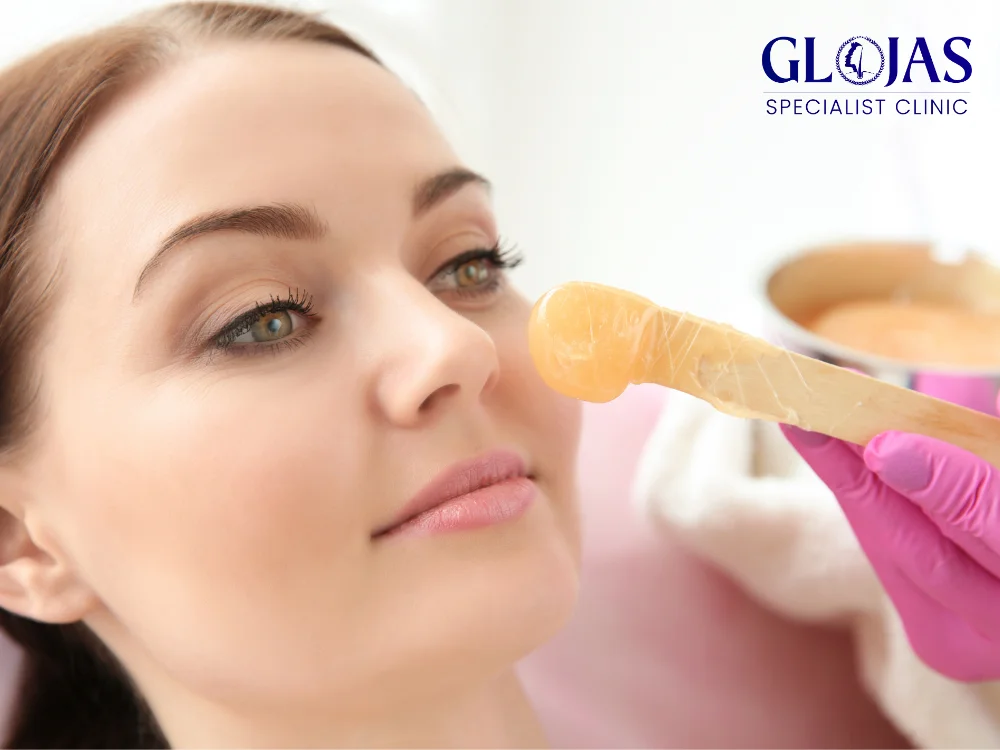
Hair removal can be a frustrating and ongoing battle for many individuals, leading them to seek out the most effective depilatory methods. While traditional options like shaving and waxing remain popular, advancements in technology, such as the Candela Gentle YAG Laser, have revolutionized the world of hair removal. In this article, we will explore the various depilatory methods available, including both temporary and permanent solutions, and highlight why Candela Gentle YAG Laser stands out as one of the top choices for long-term results. What Is a Depilatory? A depilatory refers to any product or method used to remove hair from the surface of the skin. Unlike epilation, which removes hair from the root (such as with waxing or tweezing), depilatories work by dissolving the part of the hair that is visible above the skin. Depilatory creams, lotions, and foams contain active chemical ingredients that break down the structure of hair, allowing it to be easily wiped away. Depilatories are often used for areas like the legs, arms, underarms, and bikini line, providing a quick and pain-free hair removal solution. However, because they do not remove the hair from the root, hair tends to regrow within a few days. Types of Depilatory Methods When it comes to hair removal, there are several depilatory methods available, each with its own pros and cons. Let’s explore five popular options: 1. Depilatory Creams One of the most common forms of depilatories is depilatory creams. These creams contain active ingredients, such as calcium thioglycolate, that dissolve hair proteins, making it easy to wipe the hair away. The process is painless, though there may be a slight odor due to the chemicals involved. Pros: Quick, affordable, and easy to use at home. Cons: Temporary results; hair typically regrows within a few days. 2. Shaving Although not technically a depilatory, shaving is one of the oldest and most widely used methods of hair removal. Shaving cuts hair at the surface of the skin, making it smooth to the touch. However, it only lasts for a few days before regrowth becomes noticeable. Pros: Fast, affordable, and convenient. Cons: Frequent maintenance required, potential for nicks, cuts, and razor burn. 3. Waxing Unlike depilatories that remove hair at the surface, waxing removes hair from the root. This method involves applying warm wax to the skin and quickly pulling it off, removing the hair along with it. Waxing can be painful, but the results last much longer than creams or shaving. Pros: Longer-lasting results (up to 4 weeks). Cons: Painful and can cause skin irritation or ingrown hairs. 4. Sugaring Similar to waxing, sugaring is another method that pulls hair from the root. However, sugaring uses a natural mixture of sugar, lemon juice, and water, which is considered gentler on the skin. Sugaring is ideal for sensitive skin and can reduce hair growth over time. Pros: Less painful than waxing, made from natural ingredients. Cons: Requires frequent treatments to maintain smooth skin. 5. Laser Hair Removal (Candela Gentle YAG Laser) One of the most effective long-term depilatory methods is laser hair removal, specifically with devices like the Candela Gentle YAG Laser. This advanced technology uses laser energy to target and destroy hair follicles, leading to permanent reduction in hair growth over multiple sessions. How the Candela Gentle YAG Laser Works The Candela Gentle YAG Laser is a highly effective solution for individuals with darker skin tones and those looking for a more permanent solution to hair removal. The YAG laser targets the hair follicles without damaging the surrounding skin, making it ideal for treating larger areas like the legs, back, and arms. Over the course of several sessions, the treated hair becomes finer, lighter, and eventually stops growing altogether. Pros: Permanent hair reduction, suitable for all skin types, and minimal discomfort. Cons: Requires multiple sessions (6-8 treatments), higher initial cost compared to other depilatory methods. Comparing Depilatory Creams to Candela Gentle YAG Laser When deciding between depilatory creams and laser treatments like the Candela Gentle YAG Laser, it’s important to consider your goals, budget, and time commitment. Let’s break down the key differences: Depilatory Creams Candela Gentle YAG Laser Cost: Affordable, usually $10-20 per bottle Cost: More expensive, but long-term investment Duration: Lasts a few days to a week Duration: Permanent hair reduction after several treatments Pain: Painless Pain: Minimal discomfort during sessions Skin Types: Best for lighter skin tones Skin Types: Safe for all skin tones, including darker skin Maintenance: Frequent reapplication needed Maintenance: Requires fewer touch-ups after initial sessions If you’re looking for a quick, temporary solution, depilatory creams are an easy and cost-effective choice. However, for those seeking long-term results and are tired of constant maintenance, laser hair removal with the Candela Gentle YAG Laser is the best option available. Benefits of Candela Gentle YAG Laser for Hair Removal Laser hair removal has become a popular choice for permanent hair reduction, and the Candela Gentle YAG Laser offers several distinct advantages: 1. Permanent Results Unlike other depilatory methods that require constant reapplication or maintenance, laser hair removal provides a permanent reduction in hair growth. After a series of treatments, you can enjoy smooth skin without the need for daily hair removal routines. 2. Safe for All Skin Types The Candela Gentle YAG Laser is particularly effective for individuals with darker skin tones, a group that can struggle to find suitable laser treatments. The YAG wavelength targets hair follicles without damaging surrounding skin, reducing the risk of hyperpigmentation or burns. 3. Minimal Downtime One of the major benefits of laser hair removal is the minimal downtime required. After a session, patients can return to their regular activities almost immediately, with only slight redness or sensitivity in the treated area. 4. Precision Targeting The laser technology used in the Candela Gentle YAG Laser allows for precise targeting of hair follicles, ensuring that only unwanted hair is treated. This minimizes the risk of irritation and promotes faster healing. 5. Less Painful Than Waxing While waxing pulls
Fakta Mengejutkan: Biaya Tanam Rambut & Apakah Layak?

Tanam rambut adalah prosedur medis yang bertujuan untuk mengatasi kebotakan dengan cara memindahkan folikel rambut dari bagian kepala yang masih memiliki rambut ke area yang mengalami kerontokan atau kebotakan. Metode ini semakin populer di kalangan pria dan wanita yang ingin mendapatkan tampilan rambut lebih penuh dan alami. Namun, banyak orang bertanya-tanya: berapa biaya tanam rambut? Apakah prosedur ini benar-benar sepadan dengan hasilnya? Artikel ini akan membahas secara mendalam tentang biaya tanam rambut, faktor yang mempengaruhi harga, dan berbagai metode yang tersedia. Berapa Biaya Tanam Rambut? Biaya tanam rambut bisa sangat bervariasi tergantung beberapa faktor. Secara umum, harga prosedur ini berkisar antara Rp15 juta hingga Rp100 juta tergantung pada teknik yang digunakan, jumlah folikel yang ditanam, serta lokasi klinik. Berikut ini adalah estimasi biaya berdasarkan teknik yang digunakan: Metode Tanam Rambut Kisaran Harga FUE (Follicular Unit Extraction) Rp25 juta – Rp100 juta FUT (Follicular Unit Transplantation) Rp15 juta – Rp50 juta DHI (Direct Hair Implantation) Rp30 juta – Rp120 juta Faktor yang Mempengaruhi Biaya Tanam Rambut 1. Jumlah Folikel Rambut yang Ditanam Biaya tanam rambut biasanya dihitung berdasarkan jumlah folikel yang ditanam. Semakin banyak folikel yang ditransplantasikan, semakin mahal biayanya. ✔ Biaya per graft: Rp30.000 – Rp100.000 per folikel. 2. Teknik yang Digunakan FUE: Teknik ini lebih mahal karena minim bekas luka dan lebih alami. FUT: Metode ini lebih terjangkau tetapi meninggalkan bekas luka garis di kulit kepala. DHI: Prosedur terbaru dengan hasil yang lebih cepat, tetapi biayanya juga lebih tinggi. 3. Lokasi Klinik Klinik yang berlokasi di kota besar seperti Jakarta, Surabaya, dan Bandung cenderung memiliki harga lebih tinggi dibandingkan klinik di daerah kecil. ✔ Negara lain seperti Malaysia,Turki dan India menawarkan tanam rambut dengan harga lebih murah dibandingkan Indonesia. 4. Pengalaman Dokter Ahli bedah dengan pengalaman lebih tinggi biasanya mengenakan tarif lebih mahal karena keahlian mereka dalam memberikan hasil yang lebih alami. ✔ Dokter berpengalaman = Biaya lebih mahal✔ Dokter baru = Biaya lebih murah, tetapi risiko lebih tinggi 5. Biaya Tambahan Selain biaya utama, ada beberapa biaya tambahan yang perlu dipertimbangkan: Konsultasi awal: Rp500.000 – Rp2 juta Obat pascaoperasi: Rp1 juta – Rp3 juta Perawatan lanjutan: Rp2 juta – Rp10 juta Proses Tanam Rambut: Apa yang Harus Diketahui? Tanam rambut bukanlah prosedur sederhana dan membutuhkan beberapa tahap. Berikut adalah langkah-langkah yang biasanya dilakukan: 1. Konsultasi Awal Dokter akan melakukan analisis kondisi rambut dan menentukan jumlah folikel yang perlu ditransplantasikan. 2. Proses Pengambilan Folikel Folikel rambut diambil dari bagian kepala yang masih memiliki rambut sehat (biasanya bagian belakang kepala). 3. Penanaman Folikel Folikel yang telah diambil kemudian ditanamkan ke area yang mengalami kebotakan menggunakan teknik yang dipilih. 4. Pemulihan Pascaoperasi Pembengkakan ringan bisa terjadi selama beberapa hari. Pasien harus menghindari paparan sinar matahari langsung. Hasil akhir biasanya mulai terlihat dalam 6 hingga 12 bulan. Apakah Biaya Tanam Rambut Worth It? Banyak orang yang telah menjalani prosedur ini merasa puas dengan hasilnya karena rambut yang tumbuh kembali tampak alami dan permanen. Namun, sebelum memutuskan untuk menjalani tanam rambut, pertimbangkan hal berikut:✔ Apakah Anda siap dengan biaya yang cukup besar?✔ Apakah Anda memilih klinik yang memiliki reputasi baik?✔ Apakah Anda memahami bahwa hasilnya tidak instan? Jika jawaban Anda adalah ya, maka tanam rambut bisa menjadi solusi terbaik untuk mengatasi kebotakan dan meningkatkan rasa percaya diri Anda. Alternatif Selain Tanam Rambut Jika biaya tanam rambut terlalu mahal, beberapa alternatif lain bisa menjadi pilihan: 1. Minoxidil & Finasteride ✔ Minoxidil (Rp200.000 – Rp500.000/bulan) membantu merangsang pertumbuhan rambut.✔ Finasteride (Rp300.000 – Rp1 juta/bulan) mengurangi kerontokan rambut akibat hormon DHT. 2. PRP (Platelet-Rich Plasma) ✔ Terapi suntikan untuk merangsang pertumbuhan rambut.✔ Biaya sekitar Rp3 juta – Rp10 juta per sesi. 3. Hair Tattoo (Scalp Micropigmentation) ✔ Alternatif non-bedah untuk memberikan efek rambut yang lebih penuh.✔ Harga mulai dari Rp5 juta – Rp20 juta. Pertanyaan yang Sering Diajukan (FAQ) 1. Apakah hasil tanam rambut permanen?Ya, hasil tanam rambut biasanya permanen karena folikel yang ditransplantasikan berasal dari bagian kepala yang tidak rentan terhadap kebotakan. 2. Berapa lama proses pemulihan setelah tanam rambut?Pemulihan awal membutuhkan waktu 5-10 hari, tetapi hasil akhir baru terlihat setelah 6-12 bulan. 3. Apakah tanam rambut bisa gagal?Kemungkinan gagal selalu ada, terutama jika dilakukan oleh dokter yang kurang berpengalaman atau jika pasien tidak mengikuti prosedur pemulihan dengan benar. 4. Apakah tanam rambut sakit?Prosedur ini dilakukan dengan anestesi lokal, sehingga pasien tidak merasakan sakit saat operasi. Namun, sedikit ketidaknyamanan bisa dirasakan selama pemulihan. 5. Negara mana yang menawarkan biaya tanam rambut lebih murah?Turki, India, dan Thailand menawarkan tanam rambut dengan harga lebih terjangkau dibandingkan Indonesia, tetapi tetap pastikan klinik yang dipilih memiliki reputasi baik. Kesimpulan Biaya tanam rambut mungkin terasa mahal, tetapi jika dilakukan di tempat yang terpercaya dan dengan metode yang tepat, hasilnya bisa sangat memuaskan. Dengan memahami faktor yang mempengaruhi harga dan memilih solusi yang tepat, Anda bisa mendapatkan rambut yang lebih sehat dan percaya diri.
